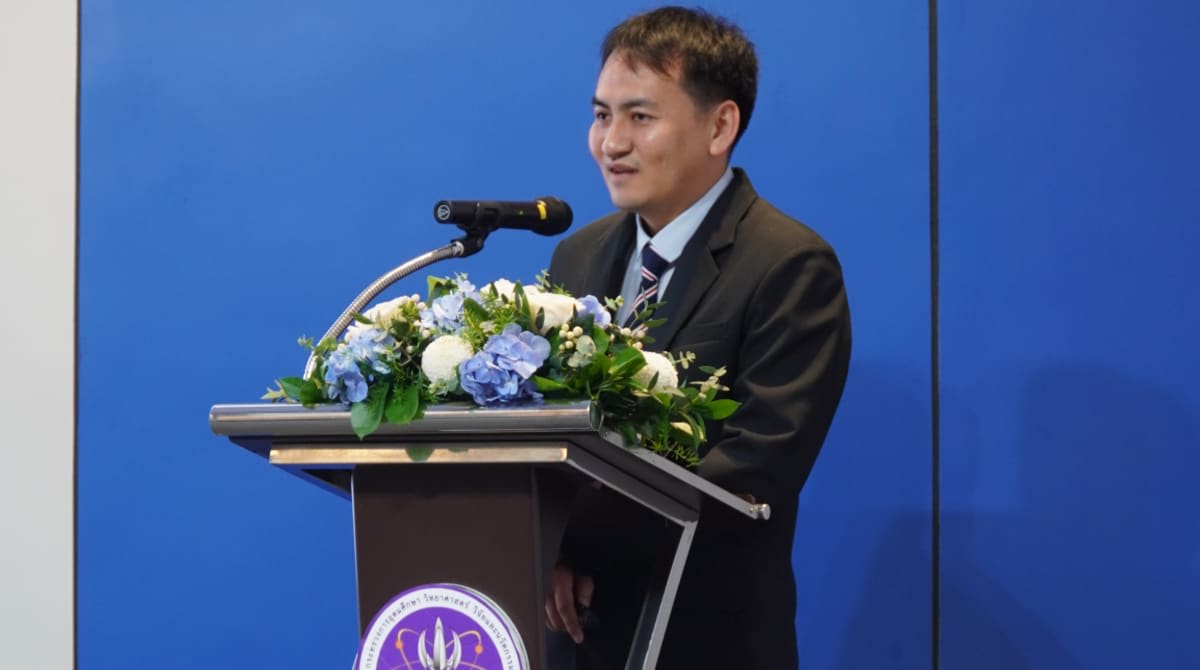Over the past two months, a team of IceCube drill engineers have completed an impressive amount of work during the first of three consecutive field seasons for the IceCube Upgrade. The project is funded by the National Science Foundation and international collaborators.
The goal of the project is to drill seven holes in 2025/2026 and deploy seven more closely spaced and more densely instrumented strings of sensors in the central part of the array, which will improve IceCube’s sensitivity to low energies. Having a productive first field season both sets the Upgrade project up for success and trains the new generation of drillers at the South Pole.
The majority of the team’s engineers come from the University of Wisconsin–Madison’s Physical Sciences Laboratory (PSL), where equipment is fabricated and shipped to the South Pole. Additional drill engineers hail from Sweden, New Zealand, and for the first time, Thailand.

“This year’s drill team is a group of 17 talented professionals who have completed an enormous amount of work,” says Kurt Studt, drill engineer at PSL and the on-ice drill manager for the Upgrade. “We’ve overcome many difficult challenges while dealing with the extreme environment at the South Pole, including temperatures as low as -35 ⁰F and windchills below -60 ⁰F.”
The Upgrade team is still hard at work at the Pole, testing and refurbishing all of the systems and equipment needed for the next two field seasons. The team is continuing to refurbish the independent firn drill (IFD), which will be used to melt holes into the firn—the intermediate stage between snow and glacial ice—before the main hot water drill is used to rapidly drill through the deep ice. Another drill, the Antarctic Rodwell apparatus (ARA), was recently used to complete a service hole for the station and will also be used in the next field season.
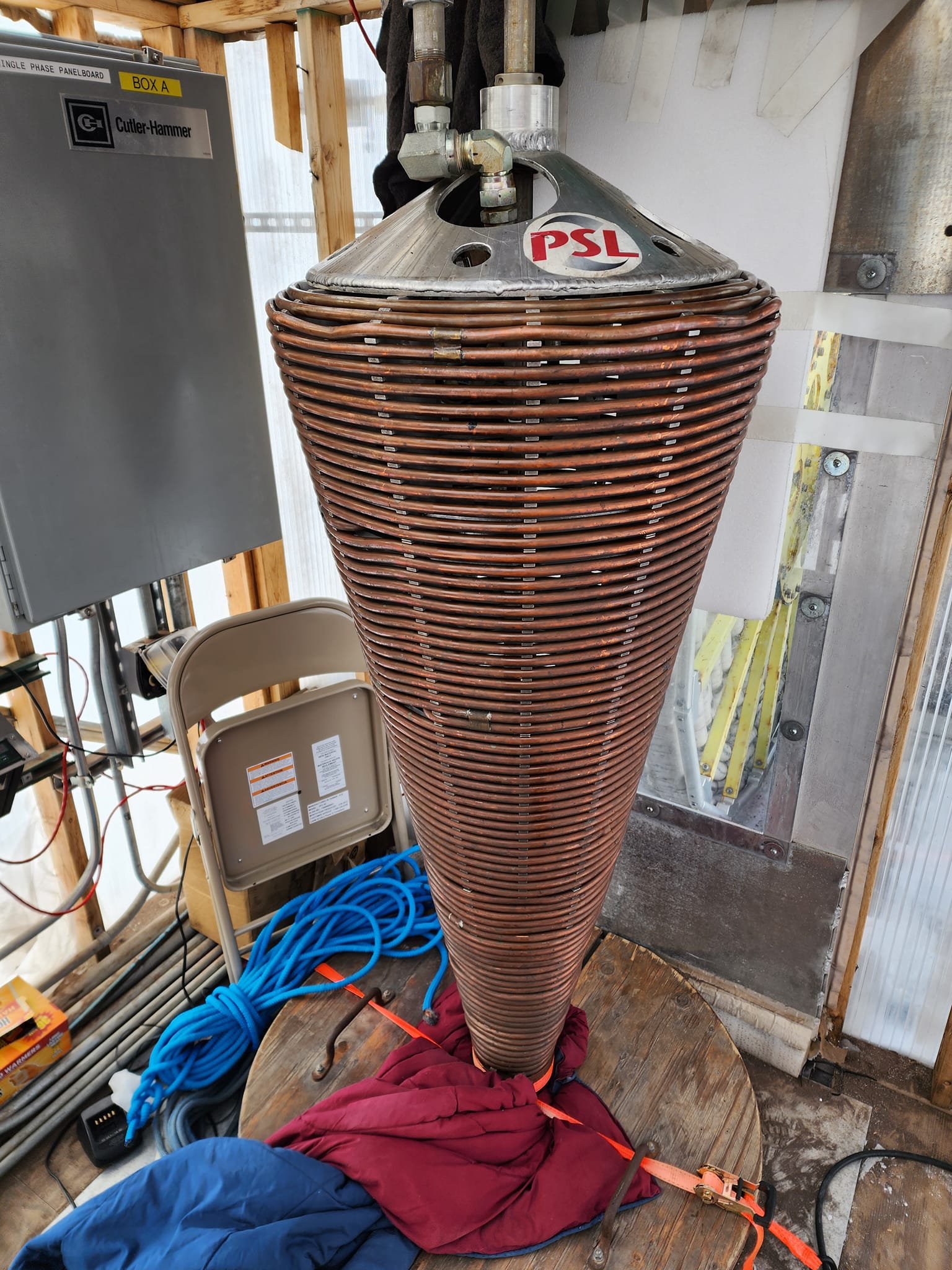

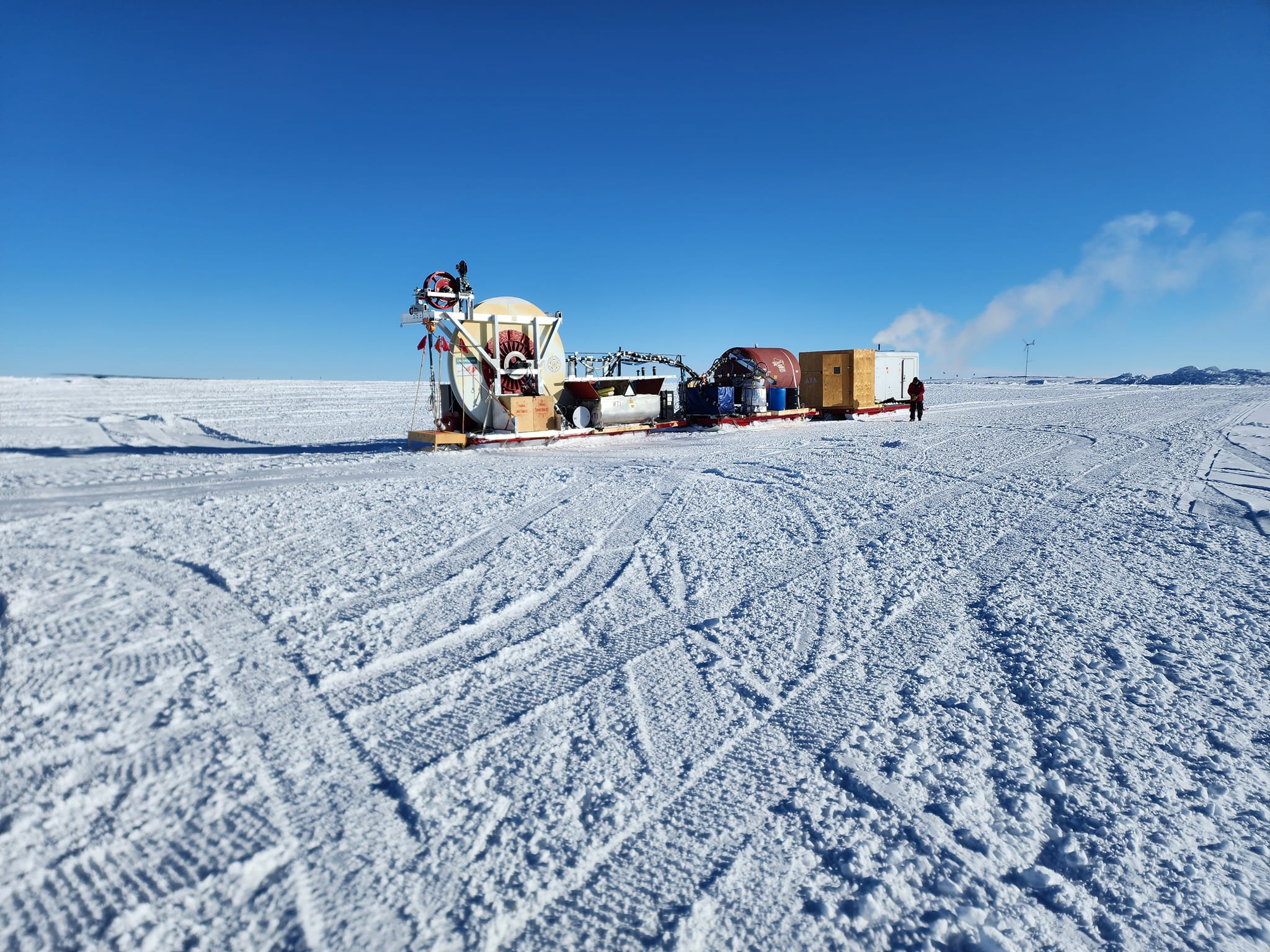
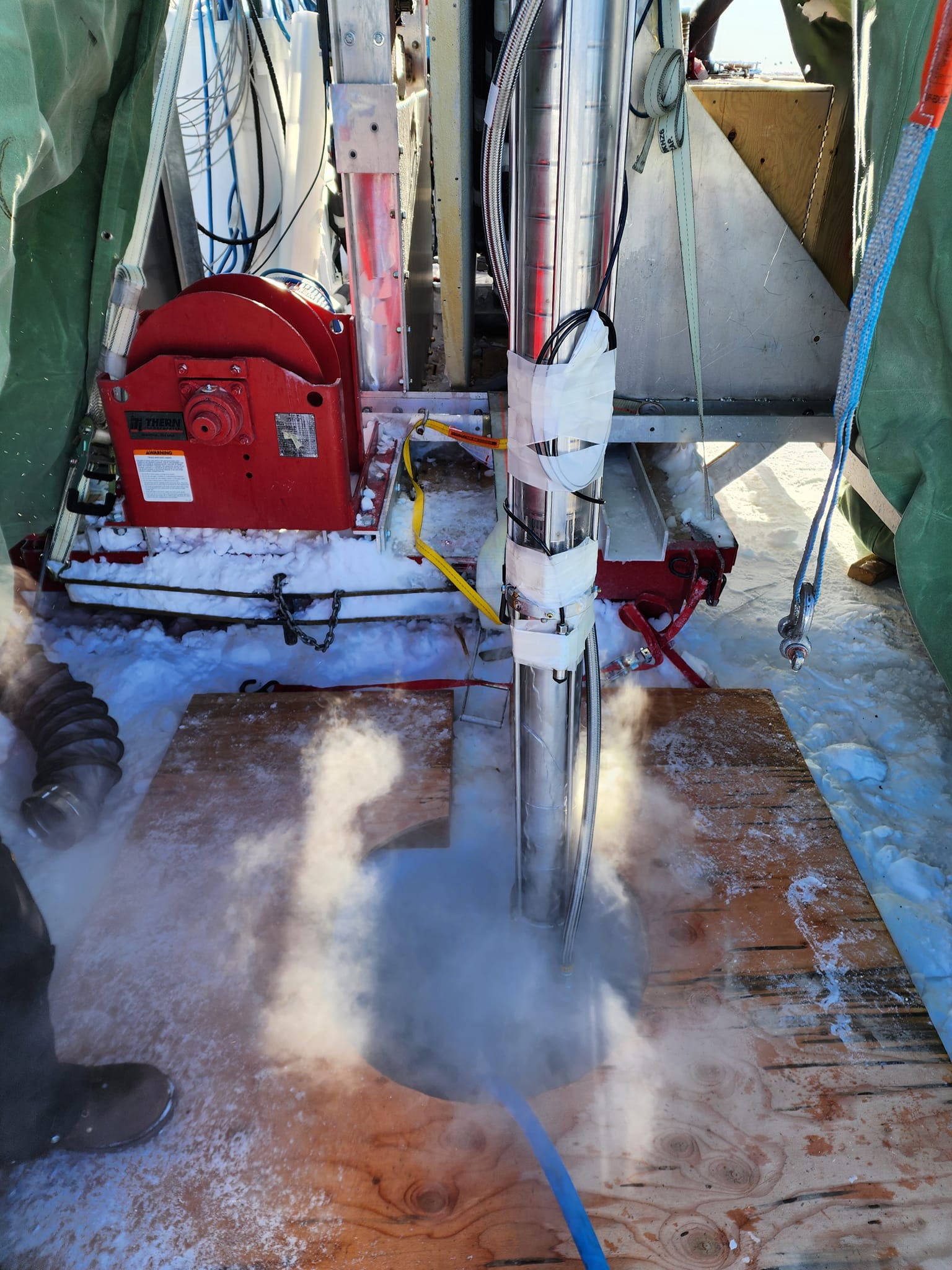
“This field season has resulted in a new generation of drillers gaining valuable experience with the three different drills being used by IceCube,” says Vivian O’Dell, the project director for the IceCube Upgrade and the planned extension of IceCube, IceCube-Gen2. “The program of work planned for this field season will be largely carried out, setting us up for successful completion of the project during the next two field seasons.”
Recently, the team worked on positioning two tower operations sites (TOS1 and TOS2), which will be moved to each of the seven holes to facilitate lowering the strings of light sensors, or digital optical modules, into the ice.

In the past two months, all three generators were refurbished, load tested, synchronized, and winterized (i.e., sensitive components stored in a special heated area to survive the cold winter months). They were then moved to the seasonal equipment site (SES) close to the center of the IceCube array where the holes will be drilled. The SES will also provide a stable supply of electricity and hot pressurized water throughout each field season.
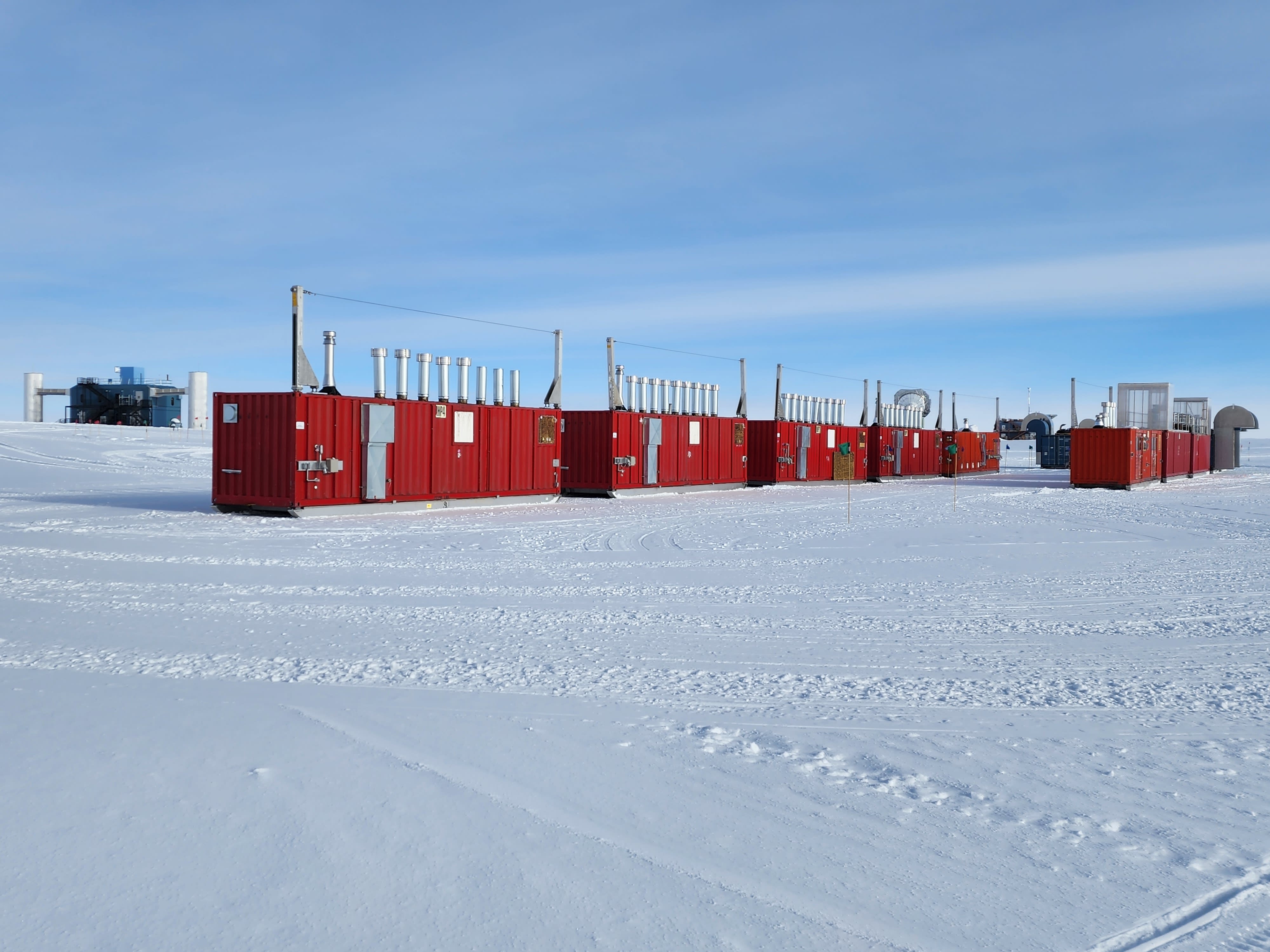
In addition to the generators, all four main heating plants that will heat the water for the hot water drill, two water tanks, the preheat system, the high-pressure pump, the fuel tower, and a warming structure have all been installed at the SES.
“It is exciting to see the IceCube drill system back into configuration,” says Albrecht Karle, the principal investigator of the IceCube Upgrade. “The upgrade will allow us to lower the energy threshold for neutrino interactions and measure neutrino properties with unprecedented statistics and precision. We also see it as a first step towards a future extension, IceCube-Gen2, at an order of magnitude larger than IceCube. “
The team will finalize any remaining work before departing the South Pole on February 12. The international IceCube Collaboration, consisting of more than 350 people from 59 institutions in 14 countries, is already building and preparing instrumentation to be shipped to the South Pole as early as this fall for the next field season.


